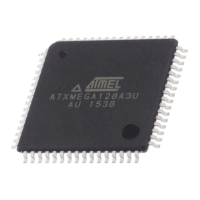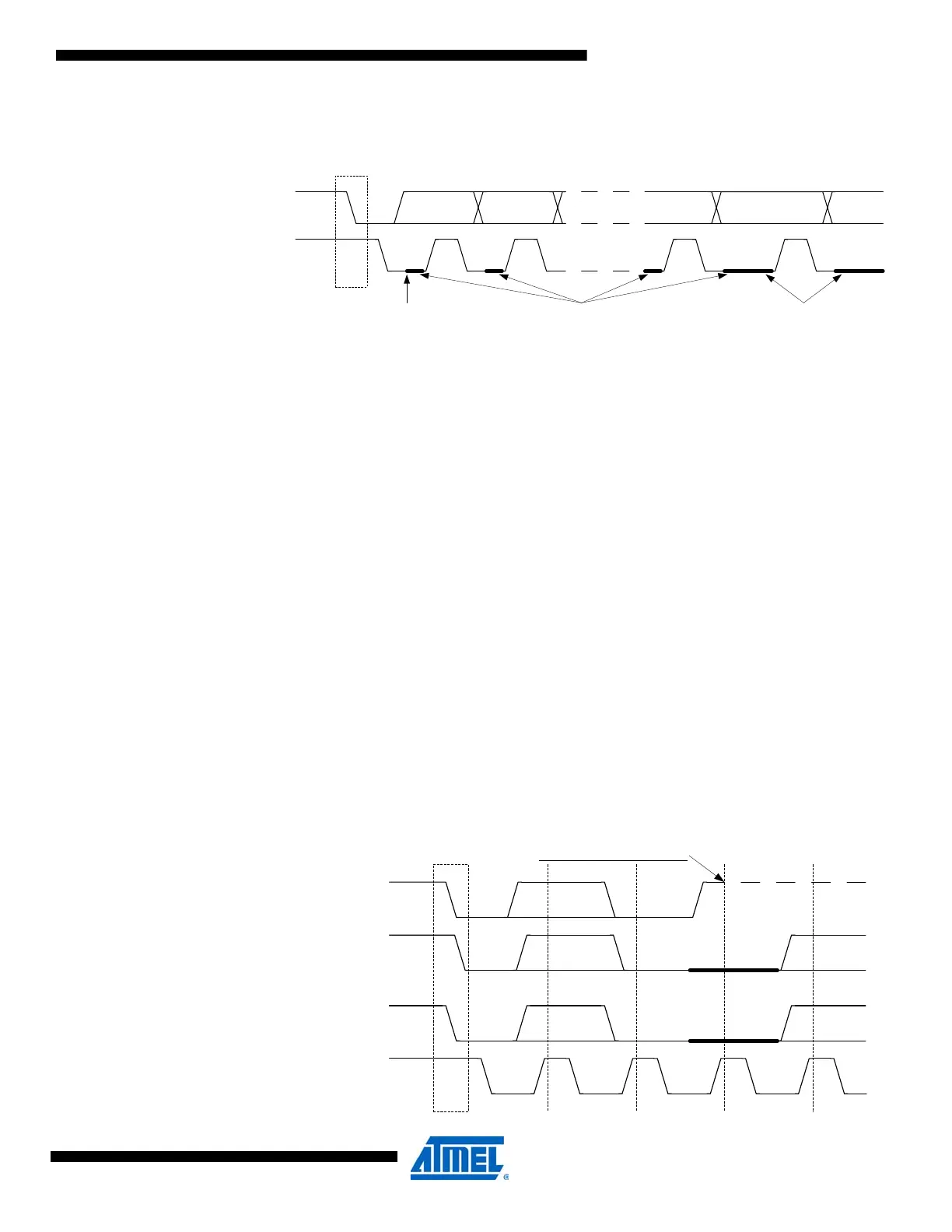267
8331B–AVR–03/12
Atmel AVR XMEGA AU
Three types of clock stretching can be defined, as shown in Figure 21-8.
Figure 21-8. Clock stretching
(1)
.
Note: 1. Clock stretching is not supported by all I
2
C slaves and masters.
If a slave device is in sleep mode and a START condition is detected, the clock stretching nor-
mally works during the wake-up period. For AVR XMEGA devices, the clock stretching will be
either directly before or after the ACK/NACK bit, as AVR XMEGA devices do not need to wake
up for transactions that are not addressed to it.
A slave device can slow down the bus frequency by stretching the clock periodically on a bit
level. This allows the slave to run at a lower system clock frequency. However, the overall per-
formance of the bus will be reduced accordingly. Both the master and slave device can
randomly stretch the clock on a byte level basis before and after the ACK/NACK bit. This pro-
vides time to process incoming or prepare outgoing data, or perform other time-critical tasks.
In the case where the slave is stretching the clock, the master will be forced into a wait state until
the slave is ready, and vice versa.
21.3.8 Arbitration
A master can start a bus transaction only if it has detected that the bus is idle. As the TWI bus is
a multi-master bus, it is possible that two devices may initiate a transaction at the same time.
This results in multiple masters owning the bus simultaneously. This is solved using an arbitra-
tion scheme where the master loses control of the bus if it is not able to transmit a high level on
the SDA line. The masters who lose arbitration must then wait until the bus becomes idle (i.e.,
wait for a STOP condition) before attempting to reacquire bus ownership. Slave devices are not
involved in the arbitration procedure.
Figure 21-9. TWI arbitration.
SDA
SCL
S
ACK/NACKbit 0bit 7 bit 6
Periodic clock
stretching
Random clock
stretching
Wakeup clock
stretching
DEVICE1_SDA
SDA
(wired-AND)
DEVICE2_SDA
SCL
S
bit 7 bit 6 bit 5 bit 4
DEVICE1 Loses arbitration

